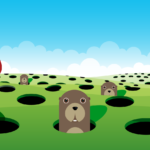Is our opportunistic system enough? And what costs and benefits come with a screening program?
The numbers are clear – melanoma is the 3rd most commonly diagnosed cancer in Australia; it kills about 1400 of us every year; and we have the highest incidence in the world, with a rate approximately 8.7 times the global average.
Why then do we not have a national screening program, as we do for bowel cancer, breast cancer and cervical cancer?
“In Australia, there are already a lot of people getting skin checks,” said Professor Anne Cust during her recent presentation to the Australian Melanoma Conference in Brisbane.
“From 2006 to 2016, the proportion of people aged 45 to 69 who had a skin check in the past 12 months increased from 29% to 37%.
“Perhaps we’re doing well enough without an organised, targeted screening program? Maybe we just need to encourage the right people to get a skin check.”
The problem with that if-it-ain’t-broke-don’t-fix-it model is that on closer inspection there are some quite important broken bits.
“What we have is an opportunistic screening scenario in which it might be the doctor or the patient who initiates a skin check,” said Professor Cust, a cancer epidemiologist and deputy director of the Daffodil Centre, a joint venture between Cancer Council NSW and the University of Sydney.
“There are several problems with that opportunistic system. It’s very costly – almost $2 billion a year is now spent on skin cancer.
“We know that there is inequity in who accesses skin checks, who’s got access to a specialist, who has access to new technologies, and that results in over-screening of some population sub-groups and under-screening in others.
“There are also lost opportunities to embed primary prevention alongside early detection.”
An organised screening program solves many of those knotty issues.
“In an organised screening program, everyone who is eligible can access that regardless of how much money they have,” Professor Cust told TMR.
“It’s entirely free, so there’s no gap payment.
“The other important thing that comes with a screening program is an assessment of the quality of the skin check that people are getting. There are reminder systems, call-backs, and data collection about how the program is going. And there is a very clear pathway for what happens after diagnosis,” she said.
Overdiagnosis is a fact of life when it comes to melanoma, as other speakers at the conference showed. It is also an inevitable outcome of screening programs.
“As the risk threshold for screening is lowered – so, as more people become eligible for screening – the ratio of overdiagnosis to cancer deaths prevented increases,” said Professor Cust.
“You can’t avoid overdiagnosis in a screening program. But you’re also preventing people dying from cancer.”
A 2019 a melanoma screening summit was held in Brisbane, which concluded there was insufficient evidence to recommend for or against an organised screening program, Professor Cust said.
The key, perhaps, is a risk-stratified, targeted screening program rather than a population-wide program similar to breast, colon and cervical cancer.
“A targeted program would be focused on people at higher risk of skin cancer in whom we think the benefits of having a regular skin check would outweigh the potential negatives or harms of having a skin check,” she said.
Isolating just who the high-risk groups are, what risk factors are most predictive of benefit, and how the program would be managed, are just some of the questions being focused on by research projects around the country.
Professor Cust said it was “relatively easy” to assess melanoma risk with online tools such as that on the Melanoma Institute Australia website and at QSkin.
“We’re doing some modelling at the Daffodil Centre, trying to work out whether [a targeted screening program] would be cost effective,” she said.
“Part of the problem is that when you do a skin check, you don’t just find melanomas, you find lots of other things. You might cut things out that end up being benign, you might cut things out – like basal cell carcinoma – that you’ve cut out at an early stage, but most of those skin cancers, won’t go on to harm you.
“But they may grow bigger and become more complicated later on. So it turns up other things and that complicates the picture.
“We’re hoping to have some preliminary findings on the risk-stratified screening program by the end of the year.”





